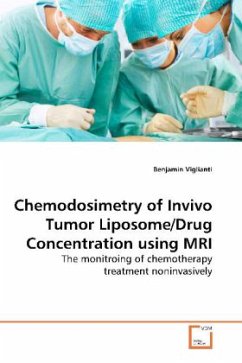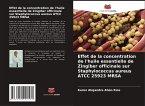The goal of this reseach was to demonstrate if MRI can be used to determine the Doxorubicin (DOX) concentration delivered in MnSO4 labled liposomes in an invivo tumor model. Using a temperature sensitive liposome formulation, it was found that MnSO4 release significantly increased the MRI signal. The degree of signal enhancment was measured and converted to DOX concentration. This MRI measured concentration was compared to direct histological measurements using fluorescence microscopy of identical regions of interest. There was a linear relationship with a slope and intercept that statistically include 1.0 and 0.0, suggesting that MRI can be used to quantify the distribution DOX delivered in thermal and non-thermally sensitive liposomes. This liposome contrast agent has potential for use with hyperthermia, by providing individualized monitoring of tissue drug concentration distribution during or after treatment. This would allow for: 1) modification of treatment variables to improve the uniformity of drug delivery and 2) provide a means to select patients most likely to benefit from this liposomal drug treatment.
Bitte wählen Sie Ihr Anliegen aus.
Rechnungen
Retourenschein anfordern
Bestellstatus
Storno








